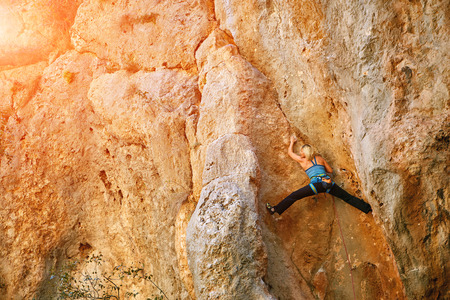Setting Out on a British Wildlife Adventure
There’s a unique thrill to venturing solo into the heart of Britain’s wild places—a feeling that lures adventurers from all walks of life. The UK’s landscapes, from the rolling patchwork fields of Yorkshire to the brooding moors of Dartmoor and the rugged highlands of Scotland, hold an ancient allure for those hungry for raw, unfiltered encounters with nature. It’s not just about ticking off species or scenic spots; it’s about standing alone in the dawn mist, boots damp with dew, senses sharpened for every rustle and birdsong. For the intrepid soul, these landscapes are more than just backdrops—they’re living theatres where foxes dart across hedgerows and red deer melt into morning fog. Solo travel here isn’t merely a test of nerve; it’s an invitation to connect deeply with the British wild, to move at your own pace, and to experience nature’s drama without distraction. Each step you take is a leap into adventure—one shaped by centuries of folklore, unpredictable weather, and the ever-present possibility of a true wildlife encounter.
2. Native Wildlife: Friends and Foes
Setting off solo across the wilds of the UK, you’re never truly alone. The countryside—be it misty moorland, ancient woodland, or sun-dappled meadows—is alive with wildlife both familiar and unexpected. Knowing who you might bump into can mean the difference between a magical encounter and a tricky situation.
Iconic Species on Your Path
The UK boasts a cast of native creatures that are as varied as its landscapes. Urban explorers may spy foxes slinking along alleyways at dusk, while rural ramblers are more likely to startle a roe deer in the undergrowth or glimpse a red squirrel darting through conifers in northern woodlands. And for those venturing into heathland or tangled brambles, theres always the slim chance of meeting Britain’s only venomous snake—the adder.
Quick Guide: Common UK Wildlife Encounters
| Species | Where You’ll Find Them | Behaviour | Safety Tip |
|---|---|---|---|
| Urban Fox | City outskirts, parks, gardens | Nocturnal, curious but wary of humans | Observe from afar; don’t feed |
| Roe Deer | Woodlands, meadows, fields (especially Scotland & southern England) | Timid, often seen at dawn/dusk | Stay quiet; give them space to bolt if startled |
| Adders | Heathland, grassy banks, coastal dunes (spring/summer) | Basks in sun, avoids disturbance | Watch your step; wear boots in long grass |
| Red Squirrel | Pine forests (Northern England, Scotland) | Nimble climbers, active by day | No threat—enjoy watching these rare natives! |
| Badger | Wooded areas, field edges (all over UK) | Nocturnal, shy, burrow dwellers | Avoid setts; don’t disturb at night |
A Word on Foes—and Friends
While most British wildlife is harmless if respected, it pays to remember that even the gentlest creature can become defensive when cornered. Stay alert but open-minded: foxes and deer are shy companions on your journey, while adders simply want to bask undisturbed. Each encounter is a reminder that adventure in the UK isn’t just about the scenery—it’s about sharing space with the wilder side of Britain.

3. Read the Signs: Recognising Animal Behaviour
Venturing solo into the wild heart of the British countryside isn’t just about braving the elements—it’s about tuning in to the subtle cues nature offers, a skill every adventurer must master. From the windswept moors of Yorkshire to the ancient forests of Scotland, learning to decipher animal behaviour can mean the difference between an exhilarating encounter and an unintended standoff.
Decoding Tracks Like a True Brit
Before you even spot a creature, the earth beneath your boots tells a story. Badger paw prints leave clear, five-toed imprints in muddy patches along hedgerows, while deer hooves cut sharp, heart-shaped marks into soft ground at dawn. Foxes, ever cunning, leave narrow, diamond-shaped tracks with claws visible at the tips. Channel your inner Ray Mears: pause, crouch low, and follow these signs with patience—just be sure not to trespass on active trails or dens.
Spotting Territorial Markings
Wildlife in the UK are masters of subtle communication. Stags score trees with their antlers during rutting season; look for fresh bark wounds and clumps of shed fur. Otters leave “spraints”—distinctly scented droppings—on prominent rocks by rivers to mark territory. Even urban foxes spray musky scent along garden fences and lamp posts. Clock these markers and you’ll know when to give certain areas a wide berth.
Interpreting Telltale Sounds
The British wilds are rarely silent if you listen closely. The startled shriek of a pheasant bursting from underfoot is less threatening than it sounds—unless it alerts nearby predators or protective livestock dogs. The harsh bark of a red deer stag signals rutting rivalry; steer clear during autumn, especially if you hear these guttural challenges echoing through misty glens. Night-time brings owls’ eerie calls and hedgehogs’ snuffling; both benign but reminders that many animals are most active after dusk.
Mastering this crucial British know-how—reading tracks, spotting markings, and interpreting wildlife noises—not only keeps you safe but transforms your solo adventure into a true wilderness experience. Stay alert, respect boundaries (both literal and animal), and you’ll avoid unwanted confrontations while collecting stories worthy of any legendary rambler.
4. Coping with Close Encounters
If you’ve ever found yourself locking eyes with a badger at twilight or defending your scotch egg from an irate goose, you’ll know that wildlife in the UK isn’t just about distant deer on misty hills. Sometimes, it’s right up in your grill—unexpected, exhilarating, and occasionally a bit hairy. Here are hard-won strategies and gritty tales of solo adventurers who’ve faced the wild head-on and lived to tell the tale.
Face-to-Face: British Wildlife Showdowns
Picture this: you’re rambling through a Sussex copse, dusk falling like velvet, when a badger shuffles out from the undergrowth. Freeze? Flee? Offer your last Hobnob as tribute? Real-life encounters call for composure and a bit of nous. Here’s what seasoned solo explorers recommend:
| Wildlife | Common Encounter Spot | Stay-Safe Strategy |
|---|---|---|
| Badger | Woodland paths at dusk/dawn | Keep still; avoid direct eye contact; move away slowly if it seems agitated. |
| Goose (Canada or Greylag) | Lakesides & parks (especially near food) | Stand tall; don’t swing bags or arms wildly; back off without turning your back. |
| Red Deer | Heathland & forest edges (rutting season) | Observe from distance; never approach stags during autumn rut. |
| Adders (Britain’s only venomous snake) | Sandy heaths & sunny banks | Watch where you step; wear boots; don’t attempt to pick up or poke them. |
The Goose Gauntlet: A True Tale from Regent’s Park
No guidebook truly prepares you for a full-on stand-off with a hissing, flapping Canada goose over your packed lunch. One solo trekker recalls: “I tried reasoning with it—big mistake! Turns out, geese don’t negotiate. I stood my ground, held my sandwich aloft like Excalibur, and slowly retreated until it lost interest.” Moral of the story? Confidence and calm trump panic every time.
Pro Tips for Unexpected Meetings
- Stay calm: Wild animals sense fear and erratic movements.
- Avoid feeding: Tempting as it is, handouts encourage aggressive behaviour (geese especially!).
- Keep your kit zipped: Food scents attract curious noses—from foxes to squirrels.
- No sudden moves: Move away steadily if the animal seems uneasy or approaches too closely.
- Know your exits: Always be aware of clear routes to leave an area quickly if needed.
Adventure Wisdom: The British Way
Toughening up to face UK wildlife isn’t just about survival—it’s part of what makes solo adventure here so thrilling. Whether you’re navigating a herd of Highland cattle or negotiating peace with a territorial swan, remember: respect their space, trust your instincts, and embrace the wild unknown. That’s the spirit of adventure—British style.
5. Staying Safe: Essential Kit and Practices
If you’re braving the wilds of the UK alone, your kit can make or break your adventure—and possibly your safety. Whether you’re stalking red deer in the Scottish Highlands or tracking badgers in an English woodland at dusk, being prepared is non-negotiable. Here’s the core gear every solo wildlife trekker needs, along with field-tested habits that could save your hide.
The Must-Have Gear
Sturdy Footwear
Your boots are your foundation. Opt for waterproof, ankle-supporting boots—think well-broken-in leather or reliable Gore-Tex. The terrain can shift from muddy bridleways to rocky escarpments within minutes, so don’t skimp on this essential.
Weatherproof Layers
The British climate is famously unpredictable. Always pack a high-quality waterproof jacket and lightweight layers; merino wool works wonders for both warmth and breathability. Even in summer, a sudden downpour can catch you out.
Navigation Tools
A proper OS (Ordnance Survey) map and compass are musts—don’t rely solely on GPS, as signal blackouts are common in remote areas. A charged mobile with emergency contacts preloaded is wise, but analogue backup is king.
First Aid Essentials
Cuts from brambles or nettle stings are par for the course. Carry a compact first aid kit with plasters, antiseptic wipes, tweezers (for ticks), and antihistamines just in case you stumble upon something stingy.
High-Energy Snacks & Water
Pack more water than you think you’ll need and high-calorie snacks like oat bars or trail mix. You never know when a detour—or a spellbinding wildlife sighting—will keep you out longer than planned.
Indispensable Habits
Let Someone Know Your Route
Always leave your planned route and expected return time with someone trustworthy—be it a mate, family member, or even your local B&B host.
Stay Alert & Respect Boundaries
Keep your senses sharp: rustling undergrowth could be wildlife—or warning signs of boggy ground ahead. Respect private land and heed all posted signs; farmers and gamekeepers take trespassing seriously.
Pace Yourself & Check In Regularly
The British countryside rewards patience over bravado. Take regular breaks to check your map and reassess conditions; if visibility drops or the weather turns foul, don’t hesitate to cut your journey short.
Remember:
The wild places of the UK offer some of Europe’s most exhilarating solo adventures—but only if you’re kitted out properly and vigilant about safety every step of the way.
6. When Things Go Sideways: Emergency Tips
Adventures in the British wilds can go from thrilling to hair-raising in a heartbeat. When you’re solo and the unexpected strikes—whether it’s a turned ankle in the Lake District or losing your bearings on Dartmoor—it pays to know your bushcraft basics, British style.
First Aid: Keep Calm and Crack On
If you’re injured, the first rule is simple: don’t panic. Assess your injury—are you able to move? If it’s bleeding, apply pressure with whatever cloth you’ve got handy (a classic tea towel in your pack, perhaps). For sprains, elevate and immobilise with sturdy sticks or even a walking pole. Remember, hypothermia’s a real threat year-round; layer up, stay dry, and keep moving if possible.
How to Summon Help: Make Yourself Known
British hillwalkers swear by the six-blast whistle signal—six short blasts, pause for a minute, then repeat. It’s internationally recognised and cuts through even the thickest Cumbrian mist. If you’ve got signal, dial 999 and ask for Mountain Rescue; they’re local legends for a reason. Texting friends your exact OS grid reference (from apps like OS Maps) can be a lifesaver.
If You’re Lost: Don’t Wander Blindly
Lost on the fells? Stop and take stock before marching off in any direction. Find shelter from wind and rain—stone walls or even dense gorse can work wonders. Orientate yourself with a compass or map; failing that, trust natural signs like moss growth or water flow (downhill leads to civilisation… eventually). Mark your spot visibly if you’re waiting for help—bright clothing or even an upturned rucksack does the trick.
Bonus British Bushcraft Wisdom
In true Brit fashion, ration your tea bags—they’ll keep spirits up while you wait. Above all, remember that most UK wildlife wants nothing more than to leave you be. Stay sensible, respect nature’s moodswings, and relish every moment—even the ones when things go sideways.
Respecting Nature: Leaving Only Footprints
If there’s one unbreakable rule for every solo adventurer traversing the wild corners of the UK, it’s this: leave no trace but your own footsteps. Britain’s moors, ancient woodlands, and rugged coastlines are more than just backdrops for daring escapades—they’re living legacies, shaped by centuries and deserving of reverence. The code of every true adventurer—safeguarding Britain’s wild beauty for the next soul bold enough to roam its storied paths—demands mindful action at every turn.
Pack It In, Pack It Out
Whether you’re trekking through the Lake District or scrambling over Scottish highlands, always carry out everything you bring with you. This includes food wrappers, water bottles, and anything else that wasn’t part of the landscape when you arrived. Even biodegradable items like fruit peels can disrupt fragile ecosystems or attract wildlife in unnatural ways.
Tread Lightly on Ancient Grounds
The UK is dotted with rare habitats and archaeological treasures. Stick to established footpaths to prevent erosion and avoid disturbing nesting sites or protected flora. The thrill of finding your own way is real, but so is your responsibility to protect these wonders for generations of explorers yet to come.
Wildlife Comes First
Observing a red deer at dawn or glimpsing a rare bird in flight is an electrifying experience, but keep your distance. Never attempt to feed or touch animals, as this can cause them stress or alter their natural behaviours. Remember, we’re guests in their home—respect their space and routines.
Silent Witnesses
Part of the adventure is letting nature reveal itself on its terms. Keep noise to a minimum; loud conversations or music can disrupt both wildlife and fellow wanderers seeking solitude. Soak up the silence—it’s where the magic happens.
Leave What You Find
It might be tempting to pocket a shiny pebble from a Cornish beach or a feather from a Welsh forest, but resist the urge. These small treasures belong exactly where they are, contributing to the ecosystem’s delicate balance and the sense of discovery for those who follow in your footsteps.
In the spirit of true adventure, let’s ensure our only legacy is inspiration—and not a mark upon the land. By honouring these principles each time we set out solo into Britain’s wild places, we safeguard not just our own journeys, but also those of every explorer who dares to dream after us.


